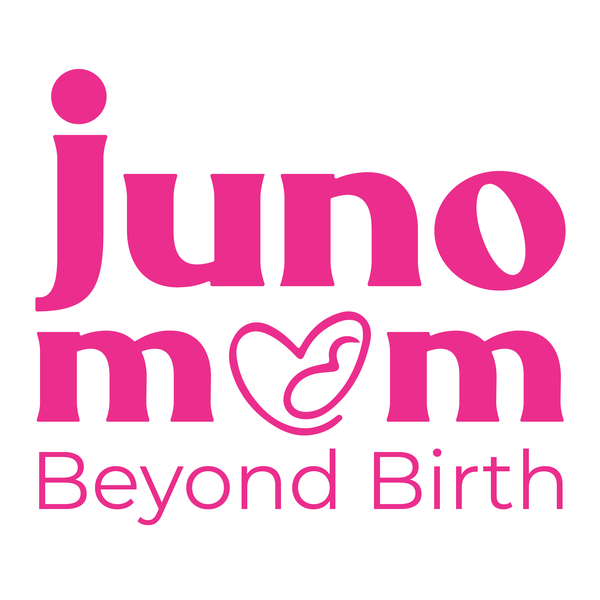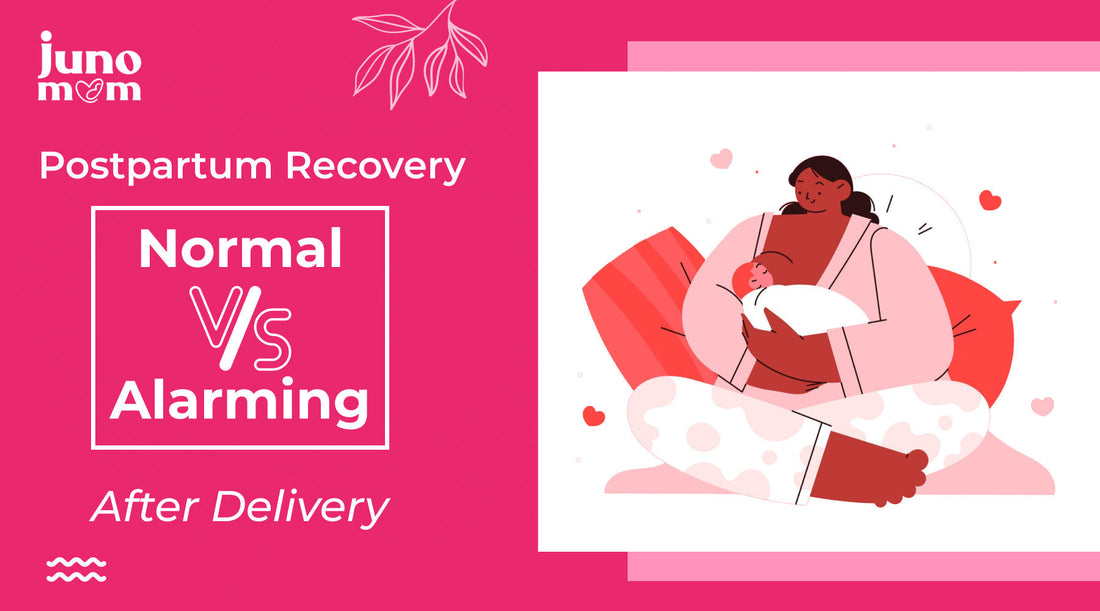The postpartum period, often called the "fourth trimester," is a phase filled with physical, emotional, and hormonal changes as your body heals after delivery. Whether you’ve had a vaginal birth or a cesarean section, postpartum recovery is unique for every mother. While some changes are normal and expected, others may indicate a need for medical attention.

This guide will help you understand what’s typical and what’s alarming during postpartum recovery so you can feel supported and prepared as you navigate this new chapter of motherhood.
What’s Normal in Postpartum Recovery?

1. Physical Recovery
Postpartum Bleeding (Lochia): It’s normal to experience bleeding for up to six weeks after delivery. The flow starts heavy and gradually lightens. It can also continue after six weeks and you must keep a regular consult with your doctor to have a routine checkup.
Perineal Discomfort: After a vaginal birth, soreness or mild swelling around the perineum is expected, especially if there were tears or an episiotomy. This is natural and your vaginal stitches will take time in healing. Take care of stitches and keep them safe until they heal.
C-Section Healing: For cesarean births, mild pain and numbness around the incision are part of the healing process. You will have to take care of your stitches and keep them safe from any dirt and extra pressure until they heal.
2. Emotional Changes
Many moms feel mood swings, irritability, or sadness in the first couple of weeks. This is due to hormonal shifts and lack of sleep. This is totally normal and can continue for a while. It’s normal to take time to adjust to the baby’s presence and find a rhythm. You must seek the support of your partner around this time as it is the best way to adjust and heal.
3. Breastfeeding Adjustments
Tender or sore nipples are common in the first few days of nursing. Engorgement may occur as your milk supply stabilizes. You do not have to worry, once your baby adjusts to feeding, you will also feel more comfortable.
4. Hormonal Changes
Hormonal fluctuations may cause night sweats as your body adjusts. It may also cause temporary hair loss which is highly common a few months after delivery.
What’s Alarming and Needs Attention?

1. Excessive Bleeding
If you’re soaking more than one pad per hour or passing large clots, this could indicate postpartum haemorrhage and need immediate medical care.
2. Severe Pain or Swelling
Pain that worsens at the incision site (after a C-section) or in the perineal area (after vaginal birth) may signal an infection. Keep a regular check on your incisions, keep them clean and avoid any heavy lifting.
3. Fever or Chills
A temperature above 100.4°F could point to an infection in the uterus, incision site, or breasts. Until you recover fully, make sure to regulate your temperature as it can affect your baby’s health as well.
4. Signs of Postpartum Depression (PPD)
If feelings of sadness, anxiety, or withdrawal persist beyond two weeks, or you experience thoughts of self-harm, seek help immediately.
5. Symptoms of Blood Clots
Pain, redness, or swelling in the legs, or chest pain and difficulty breathing, could indicate blood clots in veins, which must be consulted with the doctor.
6. Foul-Smelling Lochia
If postpartum bleeding has a bad odour, it could be a sign of uterine infection. If you have any other symptoms like swelling and itchiness around the vagina, get a check-up done with your gynaecologist for reassurance.
Tips for a Healthy Postpartum Recovery

1. Rest and Self-Care
Sleep whenever possible and ask for help when needed. Do not compromise, and consume balanced meals rich in protein, fibre, and healthy fats to aid recovery.
2. Physical Care
Use a sitz bath for perineal pain relief. Keep your C-section incision clean and dry to avoid infection. Aso, start with slow walks, calming yoga and easy exercises.
3. Emotional Support
Talk openly with loved ones about your feelings. Join postpartum support groups to connect with other moms going through similar experiences. You will feel more connected with your postpartum self and it will help in recovery.
4. Know When to Seek Help
Keep your postpartum checkups. If you notice any alarming symptoms, reach out to your doctor immediately.
Conclusion
Postpartum recovery is a blend of normal changes and occasional challenges. Recognizing what’s typical versus what’s concerning can empower you to navigate this phase confidently. Whether you’re dealing with postpartum bleeding, C-section healing, or emotional changes, remember to prioritize postpartum care and seek help when needed.
Your recovery journey may not be linear, but with the right postpartum support, you can emerge stronger and more prepared for the joys and challenges of motherhood.


